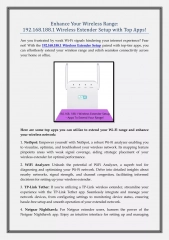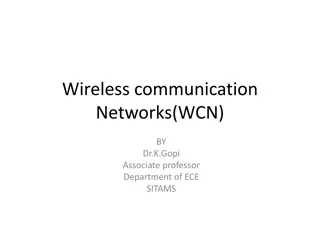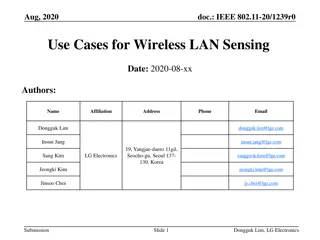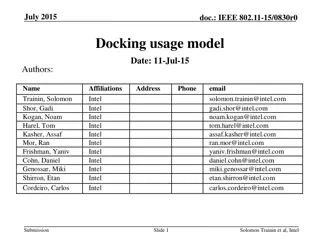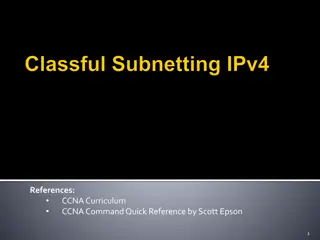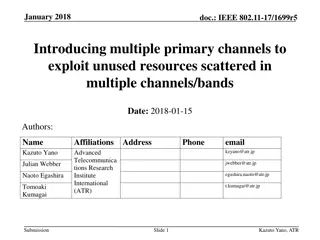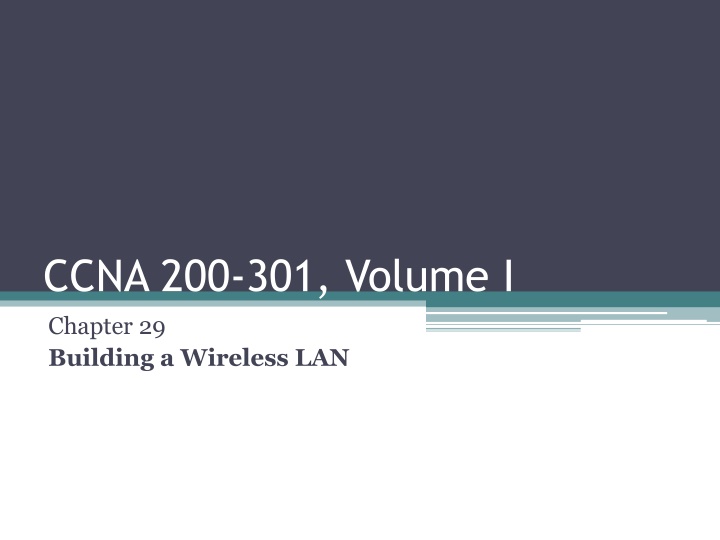
Building a Wireless LAN: Cisco AP, WLC Configuration & Interfaces
Learn how to build a Wireless LAN using Cisco Access Points, Wireless LAN Controllers with detailed steps on connecting, accessing, and configuring the network. Explore the differences between Autonomous and Lightweight APs, accessing WLC with a web browser, advanced configuration, and using different WLC ports and interfaces for effective network management.
Download Presentation

Please find below an Image/Link to download the presentation.
The content on the website is provided AS IS for your information and personal use only. It may not be sold, licensed, or shared on other websites without obtaining consent from the author. If you encounter any issues during the download, it is possible that the publisher has removed the file from their server.
You are allowed to download the files provided on this website for personal or commercial use, subject to the condition that they are used lawfully. All files are the property of their respective owners.
The content on the website is provided AS IS for your information and personal use only. It may not be sold, licensed, or shared on other websites without obtaining consent from the author.
E N D
Presentation Transcript
CCNA 200-301, Volume I Chapter 29 Building a Wireless LAN
Objectives Connecting a Cisco AP Accessing a Cisco WLC Connecting a Cisco WLC Configuring a WLAN
Comparing Connections to Autonomous and Lightweight APs
Accessing the Advanced Configuration Interface
Using WLC Ports You can connect several different types of controller ports to your network: Service port: Used for out-of-band management, system recovery, and initial boot functions; always connects to a switch port in access mode. Distribution system port: Used for all normal AP and management traffic; usually connects to a switch port in 802.1Q trunk mode. Console port: Used for out-of-band management, system recovery, and initial boot functions; asynchronous connection to a terminal emulator (9600 baud, 8 data bits, 1 stop bit, by default). Redundancy port: Used to connect to a peer controller for high availability (HA) operation.
Using WLC Interfaces Cisco controllers support the following interface types Management interface: Used for normal management traffic, such as RADIUS user authentication, WLC-to-WLC communication, web-based and SSH sessions, SNMP, Network Time Protocol (NTP), syslog, and so on. The management interface is also used to terminate CAPWAP tunnels between the controller and its APs. Redundancy management: The management IP address of a redundant WLC that is part of a high availability pair of controllers. The active WLC uses the management interface address, while the standby WLC uses the redundancy management address. Virtual interface: IP address facing wireless clients when the controller is relaying client DHCP requests, performing client web authentication, and supporting client mobility. Service port interface: Bound to the service port and used for out-of-band management. Dynamic interface: Used to connect a VLAN to a WLAN.
Cisco Wireless LAN Controller Interfaces
Connecting Wired and Wireless Networks with a WLAN
Displaying the List of RADIUS Authentication Servers
Defining a Dynamic Interface Name and VLAN ID
Editing the Dynamic Interface Parameters
Configuring the General WLAN Parameters
Selecting RADIUS Servers for WLAN Authentication
Displaying WLANs Configured on a Controller
Configuring Management Access from Wireless Networks


